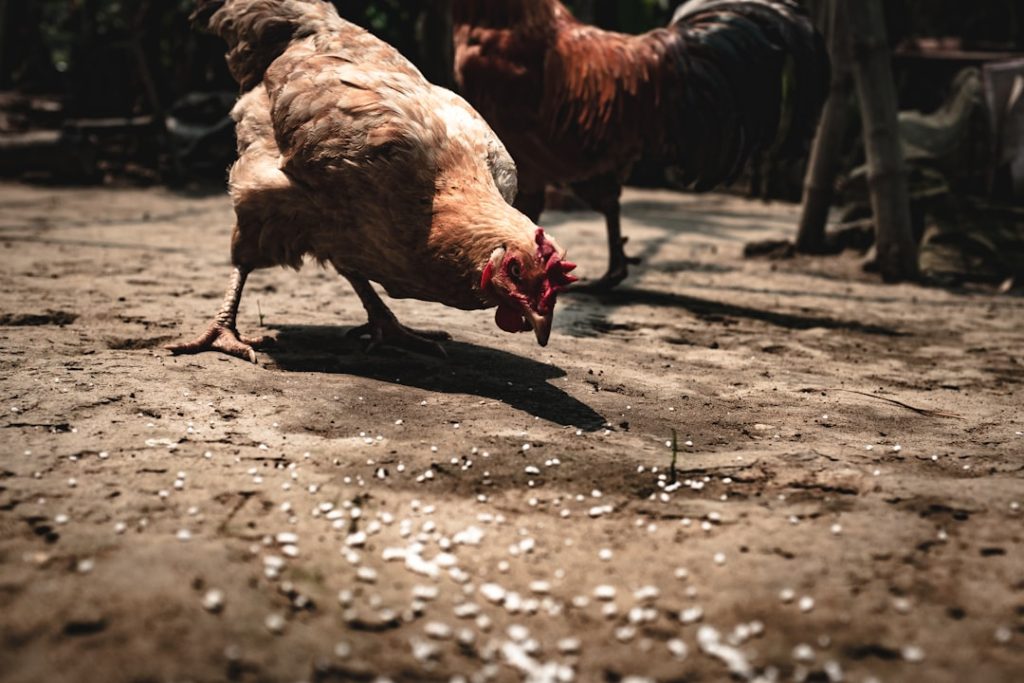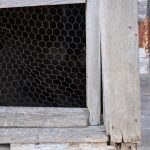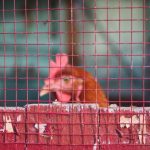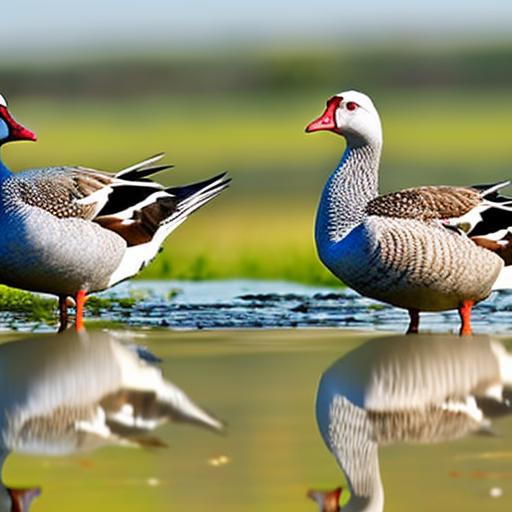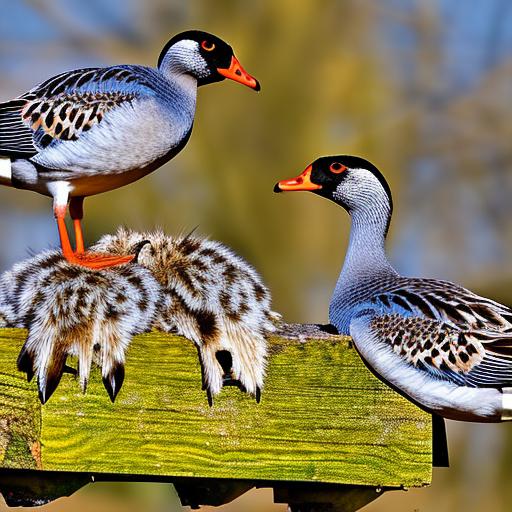Lice pose a significant threat to chicken health and productivity. These small, wingless insects infest chickens’ feathers and skin, causing discomfort and potential health issues. Two primary types of lice affect chickens: biting lice, which feed on skin and feathers, and sucking lice, which consume blood.
Both varieties can lead to stress in chickens, resulting in reduced egg production, weight loss, and in severe cases, anemia. Lice infestations spread rapidly within flocks, particularly in overcrowded or unsanitary conditions. Chickens housed in poorly ventilated, high-humidity environments are especially vulnerable.
Wild birds and rodents can introduce lice to chicken coops, necessitating vigilant prevention and control measures by poultry keepers. Crowded living spaces, inadequate sanitation, and exposure to wild animals increase the risk of lice infestations. Regular inspection, proper hygiene practices, and maintaining clean, well-ventilated coops are essential for preventing and managing lice outbreaks.
Understanding the impact of lice on chickens is crucial for maintaining flock health and optimizing egg production.
Table of Contents
- 1 Maintaining a clean and healthy coop environment
- 2 Implementing regular grooming and cleaning routines
- 3 Using natural remedies and preventative measures
- 4 Monitoring and treating infestations promptly
- 5 Consulting with a veterinarian for professional advice
- 5.1 When Lice Infestations Require Professional Help
Lice infestations in chicken flocks can sometimes be severe or persistent, necessitating professional intervention. In such cases, consulting with a veterinarian who specializes in poultry health can provide valuable insight and guidance for managing lice infestations effectively.
- 5.2 Integrated Pest Management and Prevention
- 5.3 Expert Support for a Healthy Flock
- 5.1 When Lice Infestations Require Professional Help
- 6 Creating a long-term plan for lice prevention and control
- 7 FAQs
Key Takeaways
- Lice can pose a serious threat to chickens, causing irritation, stress, and decreased egg production.
- A clean and healthy coop environment is essential for preventing lice infestations in chickens.
- Regular grooming and cleaning routines, such as dust baths and coop cleaning, can help prevent lice infestations.
- Natural remedies like diatomaceous earth and herbs can be used to prevent and treat lice infestations in chickens.
- Prompt monitoring and treatment of lice infestations is crucial to prevent the spread and minimize the impact on chickens.
- Consulting with a veterinarian can provide professional advice on lice prevention and control in chickens.
- Creating a long-term plan for lice prevention and control is essential for maintaining the health and well-being of chickens.
Maintaining a clean and healthy coop environment
Cleaning and Disinfecting the Coop
Regular cleaning and disinfecting of the coop, nesting boxes, and roosting areas can help eliminate lice eggs and prevent infestations from taking hold. It’s important to remove soiled bedding, droppings, and any debris that could harbor lice or their eggs.
Providing Adequate Ventilation and Reducing Humidity
Additionally, providing adequate ventilation and reducing humidity in the coop can help deter lice from infesting the chickens. Proper coop maintenance also includes regularly inspecting and treating the chickens for lice.
Treating and Repelling Lice
This can involve dusting the chickens with diatomaceous earth or using natural repellents to discourage lice from taking up residence on the birds.
By creating a clean and healthy coop environment, chicken owners can significantly reduce the risk of lice infestations and promote the overall well-being of their flock.
Implementing regular grooming and cleaning routines
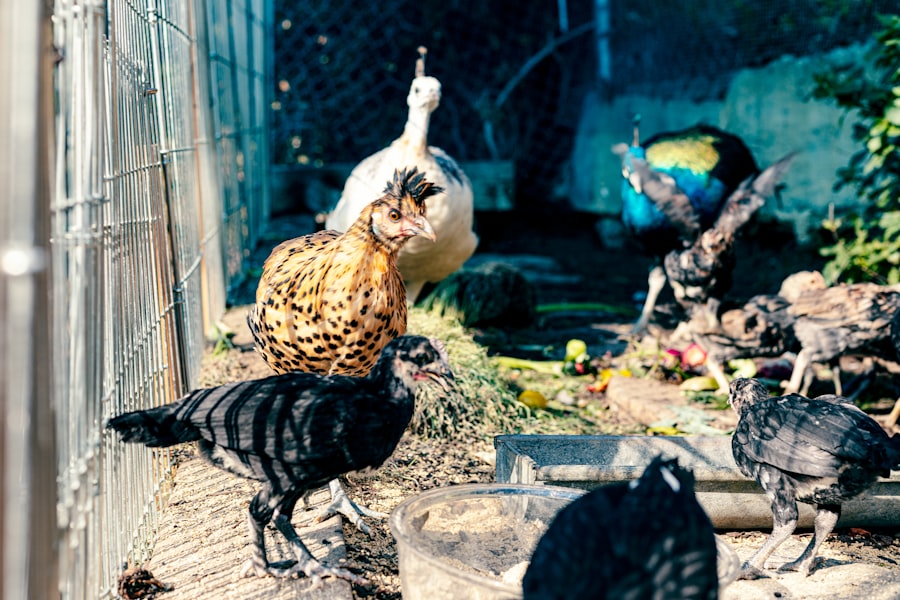
In addition to maintaining a clean coop environment, implementing regular grooming and cleaning routines for the chickens themselves is essential for preventing and controlling lice infestations. Regular grooming involves inspecting the chickens for signs of lice, such as feather damage, irritation, or visible insects on the skin. If lice are detected, the affected chickens should be isolated and treated promptly to prevent the infestation from spreading to the rest of the flock.
Regular cleaning routines for the chickens can include dust baths with diatomaceous earth or other natural remedies that help repel lice and other parasites. Dust baths not only help keep the chickens clean and free of pests but also provide them with a natural behavior that promotes their overall health and well-being. By implementing regular grooming and cleaning routines, chicken owners can stay proactive in preventing lice infestations and maintaining the health of their flock.
Using natural remedies and preventative measures
When it comes to preventing and controlling lice infestations in chickens, natural remedies and preventative measures can be highly effective. Diatomaceous earth is a popular natural remedy for treating lice in chickens. This powdery substance works by dehydrating and killing lice on contact, making it a safe and non-toxic option for treating infestations.
Additionally, essential oils such as lavender, eucalyptus, or tea tree oil can be diluted and applied to the chickens’ feathers to repel lice and other parasites. Preventative measures for lice control can include providing dust baths with diatomaceous earth, regularly inspecting the chickens for signs of lice, and maintaining a clean coop environment. Additionally, introducing natural predators of lice, such as predatory mites or parasitic wasps, can help keep lice populations in check.
By using natural remedies and preventative measures, chicken owners can take proactive steps to protect their flock from lice infestations without resorting to harsh chemicals or pesticides.
Monitoring and treating infestations promptly
Despite best efforts in prevention, lice infestations can still occur in chicken flocks. It’s crucial for chicken owners to monitor their flock regularly for signs of lice infestations and treat them promptly if detected. Common signs of lice infestations in chickens include feather damage, irritation, restlessness, and visible insects on the skin.
If any of these signs are observed, affected chickens should be isolated and treated immediately to prevent the infestation from spreading. Treatment options for lice infestations in chickens can include dusting the birds with diatomaceous earth, applying natural repellents or essential oils to their feathers, or using commercial poultry dusts or sprays specifically formulated for lice control. It’s important to follow the instructions on any treatment products carefully and to re-treat the chickens as necessary to ensure that all lice are eradicated.
By monitoring and treating infestations promptly, chicken owners can minimize the impact of lice on their flock’s health and productivity.
Consulting with a veterinarian for professional advice
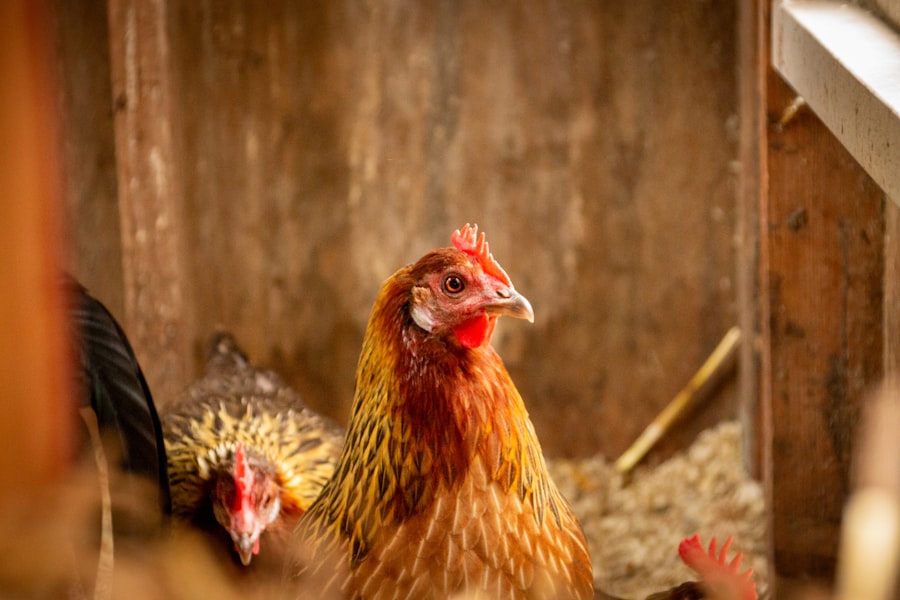
When Lice Infestations Require Professional Help
Lice infestations in chicken flocks can sometimes be severe or persistent, necessitating professional intervention. In such cases, consulting with a veterinarian who specializes in poultry health can provide valuable insight and guidance for managing lice infestations effectively.
Diagnosis and Treatment
A veterinarian can help diagnose the extent of the infestation, recommend appropriate treatment options, and provide advice on long-term prevention strategies.
Integrated Pest Management and Prevention
Veterinarians can also offer guidance on integrated pest management techniques for controlling lice in chicken coops, as well as provide recommendations for safe and effective treatment products. Additionally, veterinarians can help chicken owners develop a comprehensive health management plan for their flock that includes preventative measures for lice control.
Expert Support for a Healthy Flock
By consulting with a veterinarian for professional advice, chicken owners can access expert support in managing lice infestations and promoting the overall health of their flock.
Creating a long-term plan for lice prevention and control
Ultimately, creating a long-term plan for lice prevention and control is essential for maintaining the health and productivity of a chicken flock. This plan should include regular grooming and cleaning routines for the chickens, maintaining a clean coop environment, using natural remedies and preventative measures, monitoring for infestations, treating infestations promptly, and consulting with a veterinarian for professional advice when needed. In addition to these proactive measures, implementing biosecurity protocols can help prevent lice infestations from occurring in the first place.
This can include quarantining new birds before introducing them to the flock, limiting exposure to wild birds or rodents that may carry lice, and practicing good hygiene when handling chickens or entering the coop. By creating a comprehensive long-term plan for lice prevention and control, chicken owners can minimize the risk of infestations and ensure the well-being of their flock for years to come.
If you’re looking for more information on keeping chickens healthy, you might be interested in this article on what kind of coop is best for chickens. It’s important to provide a clean and secure environment for your chickens to prevent infestations like lice.
FAQs
What are lice and how do chickens get them?
Lice are small, wingless insects that can infest chickens and cause irritation and discomfort. Chickens can get lice from other infested birds, wild birds, or from contaminated bedding and coop environments.
What are the signs of lice infestation in chickens?
Signs of lice infestation in chickens include feather loss, irritated skin, restlessness, and decreased egg production. Chickens may also be seen preening excessively or scratching themselves.
How can I prevent lice infestation in my chickens?
To prevent lice infestation in chickens, it is important to keep the coop and nesting areas clean and dry. Regularly clean and change bedding, and provide dust baths for chickens to help them naturally control lice.
How can I treat lice infestation in my chickens?
If lice infestation is detected, it is important to treat the chickens with poultry dust or sprays specifically designed to kill lice. It is also important to thoroughly clean and disinfect the coop and nesting areas to prevent re-infestation.
Can lice infestation in chickens affect humans?
Lice that infest chickens are species-specific and do not typically affect humans. However, it is still important to practice good hygiene and avoid direct contact with infested chickens to prevent any potential transmission of lice.

Meet Walter, the feathered-friend fanatic of Florida! Nestled in the sunshine state, Walter struts through life with his feathered companions, clucking his way to happiness. With a coop that’s fancier than a five-star hotel, he’s the Don Juan of the chicken world. When he’s not teaching his hens to do the cha-cha, you’ll find him in a heated debate with his prized rooster, Sir Clucks-a-Lot. Walter’s poultry passion is no yolk; he’s the sunny-side-up guy you never knew you needed in your flock of friends!
Meet Walter, the feathered-friend fanatic of Florida! Nestled in the sunshine state, Walter struts through life with his feathered companions, clucking his way to happiness. With a coop that’s fancier than a five-star hotel, he’s the Don Juan of the chicken world. When he’s not teaching his hens to do the cha-cha, you’ll find him in a heated debate with his prized rooster, Sir Clucks-a-Lot. Walter’s poultry passion is no yolk; he’s the sunny-side-up guy you never knew you needed in your flock of friends!

